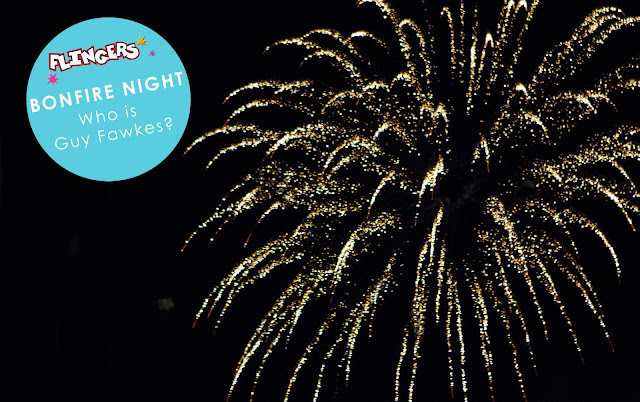Here in the UK, it's about to be a weekend full of fireworks, sparklers and roaring bonfires too! Guy Fawkes Night falls on the 5th November every year. With the clocks having gone back, the nights drawing in and a definite chill in the area, it is a day that is synonymous with digging out your mittens and sipping hot drinks to keep warm, whilst 'ooh's and 'aah's fill the air.
But do you know what Bonfire Night is really all about? And who was Guy Fawkes? Read on to find out our 12 crucial facts!

1. What is Guy Fawkes Night About?
Bonfire Night all stems back to the 5th November 1605, when 13 protesting Catholics planned to blow up the Houses of Parliament, killing the reigning King James I and the rest of his government too.
2. The Gunpowder Plot
Having rented out a nearby house as a base, they managed to smuggle 36 barrels full of gunpowder into the cellar of the House of Lords. Modern day scientists have calculated it would have been enough to destroy the whole building.
3. Anonymous Letter
However, the wicked plan began to unravel due to a suspicious anonymous letter being set to one of the Lords, William Parker, the 4th Baron Monteagle, strongly advising him against attending the House of Lords on the 5th November.
4. How did the Plot Fail?
This lead to a search of the building by guards in the early hours of the 5th November. Where they found 35 year old Guy Fawkes who had been the explosives expert within the team, and the one who was tasked with the job of lighting the fuse. Discovered in the cellar alongside the many barrels of gunpowder and the plot was foiled.
5. Who is Guy Fawkes?
Although the most notoriously associated with the event, and the person who the day is now named after, Guy Fawkes was not the ringleader and mastermind behind this plot. After many days of torture, he eventually gave up his fellow conspirators who were all either tired and executed, or killed as they attempted to evade capture.
6. How did Guy Fawkes die?
Fawkes was sentenced to the traditional traitors’ death, and was set to be hung, drawn and quartered in public. But Fawkes, managed to avoid his gruesome sentence of being cut open whilst still alive and witnessing his own innards be removed. He jumped from the gallows and broke his neck. But his dead body was subsequently chopped into quarters with his remains put on show in four corners of the UK as a warning to the nation.
8. The First Bonfire Night
Shortly after, Parliament declared that forever more, the 5th November was to be a national day of thanksgiving. And so the first celebration of what we now know as Guy Fawkes Night took place in 1606.
9. Burn the 'Guy'
Since the 13th Century, symbolic dummies have been burned on bonfires to drive away evil spirits. After the failed Gunpowder Plot, these effigies became known as 'guys' as the focus fell on Guy Fawkes' treason. Originally, the term 'guy' meant a 'repulsive, ugly person'.
10. Penny for the 'Guy'
Traditionally, 'guys' are carried around the streets before being taken to burn on the very top of the bonfire. As the 'guy' was paraded around, children would call out "a penny for the guy?" to those passing by. Those pennies would be used to purchase fireworks to set off at the bonfire, representing the explosives that were never used by the plotters.
11. Searching Parliament
To this day, it is still tradition that the Houses of Parliament are searched by the Yeomen of the Guard each November before the state opening. Whilst this is of course to ensure that this sort of terrible plot can happen again, it is more of a ceremonial act these days than a thorough search.
12. Who doesn't celebrate Guy Fawkes Night?
One of the only places in the UK that refuses to join the festivities of this tradition is St Pete's school in York. The school that Guy Fawkes attended as a child.
Remember, remember! The fifth of November, The Gunpowder treason and plot


